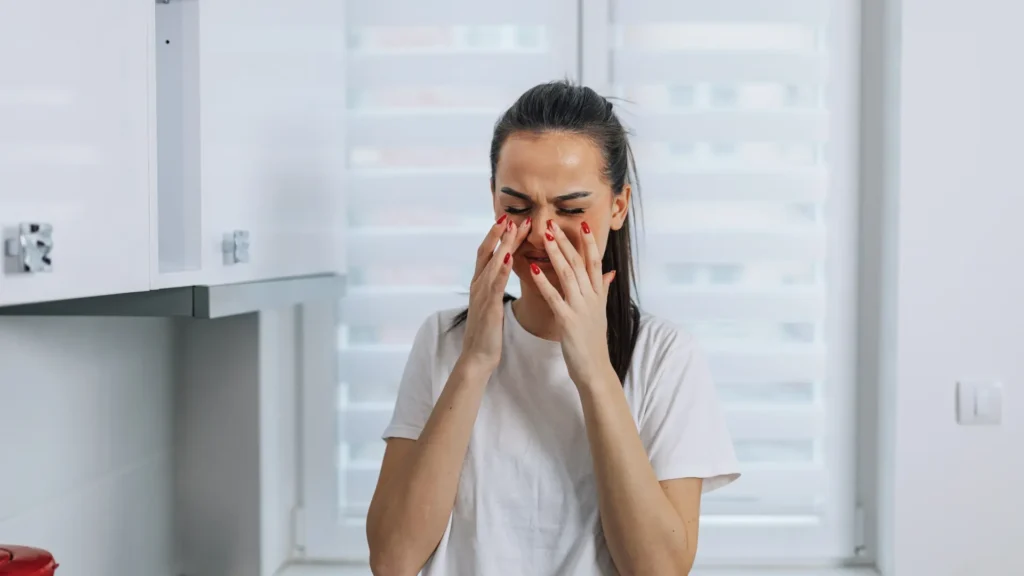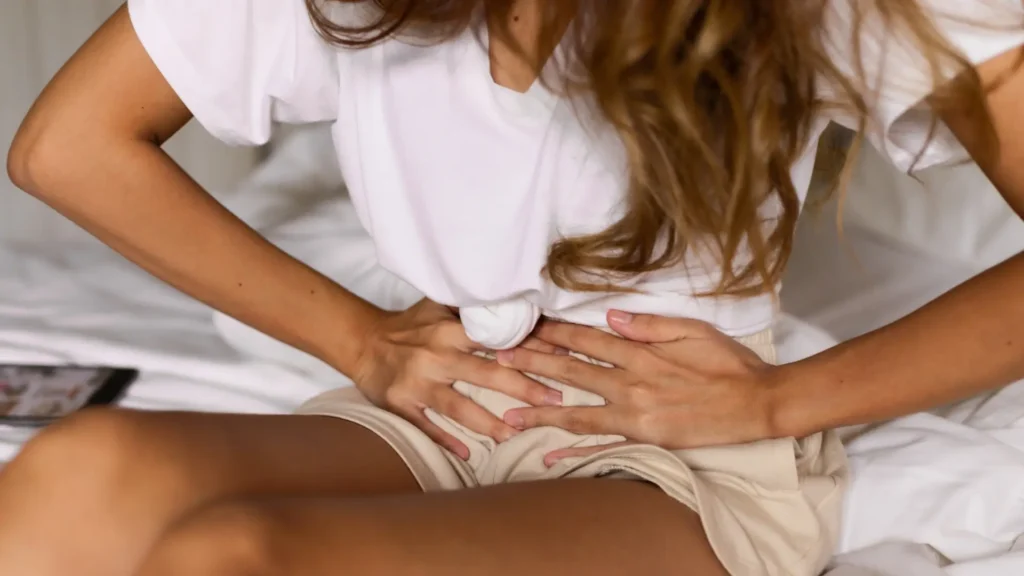What are Postpartum Hemorrhoids?
Postpartum hemorrhoids are swollen blood vessels in the rectal area that occur after childbirth. They develop due to the intense pressure on the rectal and anus veins during pregnancy and delivery. This condition is quite common among new mothers as their bodies undergo significant changes.
What are the Postpartum Hemorrhoids Symptoms?

Experiencing hemorrhoids after giving birth can be distressing for new mothers. Recognizing the symptoms is essential for seeking timely relief and treatment.
Common Signs and Indicators
- Pain and Discomfort: Many women notice a sharp or throbbing pain in the anal region. This discomfort can make it difficult to sit, walk, or engage in daily activities.
- Itchiness: Persistent itching around the anus is another common symptom of hemorrhoids after pregnancy.
- Sensitive Lumps: Small, tender lumps near the anus may indicate external hemorrhoids.
- Bleeding During Bowel Movements: Bright red blood on toilet paper or in the toilet bowl can be particularly concerning. This bleeding often occurs due to straining during bowel movements, exacerbating hemorrhoidal issues.
The Impact on New Mothers
Dealing with piles after delivery can significantly affect a mother’s ability to enjoy time with her newborn. The constant pain and irritation distract from bonding moments, feeding, and rest.
Bleeding Concerns
Bleeding during bowel movements adds another layer of anxiety. For many women who have just given birth, seeing blood can be alarming, prompting concerns about their health and recovery process.
Understanding these symptoms helps new mothers recognize when they need medical attention or should start implementing relief methods.
What Causes Postpartum Hemorrhoids?
Childbirth and hemorrhoids often go hand in hand due to the immense pressure exerted on the rectal area during labor. As a baby moves through the birth canal, it can cause veins in and around the anus to swell. This increased pressure is a significant factor leading to postpartum hemorrhoids.
Susceptibility in the Postpartum Period:
- Increased Blood Volume: During pregnancy, blood volume increases dramatically, putting extra strain on blood vessels, including those in the rectal area.
- Hormonal Changes: Pregnancy hormones like progesterone relax blood vessel walls, making them more prone to swelling.
- Constipation: Common during pregnancy and post-delivery due to hormonal shifts and iron supplements. Constipation leads to straining during bowel movements, aggravating hemorrhoidal veins.
- Physical Strain of Labor: Pushing during delivery adds significant pressure on the rectal veins, contributing to the development of hemorrhoids.
Women are particularly vulnerable to hemorrhoids after childbirth due to these combined factors. While these hemorrhoids are often temporary, some women may experience persistent issues requiring medical attention.
How to Prevent Postpartum Hemorrhoids?

Preventing postpartum hemorrhoids involves proactive steps during pregnancy and after delivery. Here are some strategies to reduce the risk:
During Pregnancy
- Maintain a High-Fiber Diet: Consuming plenty of fruits, vegetables, whole grains, and legumes helps keep bowel movements regular and soft.
- Stay Hydrated: Drinking plenty of water daily aids in digestion and prevents constipation.
- Exercise Regularly: Gentle exercises like walking or prenatal yoga improve circulation and reduce pressure on the rectal veins.
- Avoid Straining: Refrain from pushing hard during bowel movements to avoid unnecessary pressure on the rectal area.
After Delivery
- Continue a High-Fiber Diet: Keeping up with fiber intake ensures bowel regularity.
- Hydration: Continue drinking adequate water to maintain soft stools.
- Gentle Activity: Post-delivery, light physical activities can stimulate bowel function and enhance blood flow.
- Proper Resting Positions: Lie on your side when resting to alleviate pressure on the rectum.
- Avoid Prolonged Sitting or Standing: Frequently change positions to prevent extra strain on the anal veins.
Applying these measures can significantly lower the chances of developing postpartum hemorrhoids, allowing new mothers to focus on their well-being and their newborns.
What are some Relief methods for Postpartum Hemorrhoids?

1. Dietary and Lifestyle Modifications
A high-fiber diet plays a crucial role in promoting healthy digestion and preventing constipation, which can worsen hemorrhoidal symptoms in the postpartum period. Including ample fruits, vegetables, whole grains, and legumes in daily meals helps ensure smooth bowel movements. Some excellent sources of dietary fiber include:
- Apples
- Broccoli
- Oatmeal
- Lentils
Adequate hydration is equally important. Drinking plenty of water maintains soft and bulky stools, reducing the need for straining during bowel movements. Aim for at least 8-10 glasses of water per day.
Incorporating gentle exercise into your daily routine can also stimulate bowel function and improve circulation in the anal area. Simple activities like walking or yoga can be beneficial. Here are a few easy exercises to consider:
- Light walking with your baby in a stroller
- Postnatal yoga sessions
- Pelvic floor exercises (Kegels)
These lifestyle modifications not only aid in hemorrhoid relief after childbirth but also contribute to overall postpartum recovery and well-being.
2. Topical Applications and Soothing Techniques
Dealing with postpartum hemorrhoids requires a comprehensive approach, including both at-home remedies and medical interventions.
Cold Gel Packs or Ice Packs:
Using cold gel packs or ice packs can provide immediate relief from pain and inflammation associated with postpartum hemorrhoids. The cold helps reduce swelling and numbs the area, offering temporary comfort. Apply these packs for about 10-15 minutes several times a day.
Witch Hazel:
Witch hazel is a natural astringent known for its anti-inflammatory properties. It can help reduce swelling and itching in the affected area. You can apply witch hazel using:
- Witch hazel pads
- Witch hazel wipes
- Compresses soaked in witch hazel
These options are available at most pharmacies and can be used multiple times daily to soothe discomfort.
Combining these topical applications with dietary changes, adequate hydration, and regular exercise forms an effective strategy for managing postpartum hemorrhoid symptoms.
3. Sitz Baths for Hemorrhoid Relief
A sitz bath is a simple yet effective method for postpartum hemorrhoid treatment. By immersing the affected area in warm water, it can soothe discomfort and reduce inflammation. This method provides immediate relief from pain and itching associated with hemorrhoids, offering new mothers a much-needed respite.
To enhance the therapeutic effects of sitz baths, consider adding healing herbs like chamomile or lavender. These herbs possess anti-inflammatory and calming properties that can further alleviate symptoms. Simply steep the herbs in hot water, strain the mixture, and add it to your sitz bath.
Key benefits of sitz baths include:
- Warm Water Immersion: Helps relax the anal muscles and reduce swelling.
- Herbal Additives: Chamomile and lavender can promote healing and provide extra relief.
Incorporating sitz baths into your routine alongside a high-fiber diet, adequate hydration, and regular exercise ensures a comprehensive approach to managing postpartum hemorrhoids.
4. Over-the-Counter Remedies
Stool Softeners
Using stool softeners can make bowel movements easier and less painful, which helps reduce the strain on rectal veins during the healing process. They work by absorbing water into the stool, making it softer and bulkier. This can prevent further irritation of hemorrhoids and promote faster recovery.
Topical Creams and Ointments
Several over-the-counter creams or ointments provide temporary relief from postpartum hemorrhoid symptoms. These products typically contain ingredients like hydrocortisone, which reduces inflammation, or lidocaine, which numbs the affected area to ease pain and itching. Some popular options include:
- Preparation H: Contains phenylephrine, a vasoconstrictor that shrinks swollen tissue.
- Tucks Medicated Cooling Pads: Witch hazel-based pads that offer cooling relief.
- Anusol: Hydrocortisone-based cream that reduces swelling and discomfort.
These remedies can be part of a comprehensive approach to managing postpartum hemorrhoids, including both at-home remedies and medical interventions. Remember to consult with a healthcare provider before starting any new treatment to ensure it’s safe for your specific situation.
When to Seek Medical Attention for Postpartum Hemorrhoids?

Recognizing the signs of severe postpartum hemorrhoids is crucial. Certain symptoms indicate that it’s time to consult a healthcare provider for an accurate diagnosis and tailored treatment plan.
Signs That Require Medical Intervention
- Excessive Bleeding: If you notice persistent or heavy bleeding during bowel movements, it might indicate a more serious issue.
- Severe Pain: Intense pain that does not subside with home treatments may need professional attention.
- Infection Signs: Symptoms like fever, chills, or pus drainage from the hemorrhoid area suggest an infection.
- Non-Healing Hemorrhoids: Hemorrhoids that do not improve after a week or two of home treatment should be checked by a doctor.
Importance of Consulting a Healthcare Provider
A healthcare provider can offer:
- Proper Diagnosis: Ruling out other conditions that might mimic hemorrhoid symptoms.
- Tailored Treatment Recommendations: Prescribing medications or suggesting procedures that are best suited for your specific situation.
Complications to Watch For
Postpartum hemorrhoids complications can include:
- Thrombosed Hemorrhoids: Extremely painful and swollen clots in the hemorrhoidal tissue.
- Prolapsed Hemorrhoids: Hemorrhoids that protrude outside the anus and do not retract on their own.
Early consultation can prevent these complications, ensuring quicker and more effective relief.
Medical Procedures for Postpartum Hemorrhoids
When conservative methods fail to provide relief, medical procedures can offer a solution for severe postpartum hemorrhoids.
Rubber Band Ligation
Rubber band ligation is a common procedure where a small rubber band is placed around the base of the hemorrhoid. This cuts off blood supply, causing the hemorrhoid to wither and fall off within a few days. It’s minimally invasive with quick recovery times.
Hemorrhoidectomy
For more severe cases, hemorrhoidectomy might be necessary. This surgical procedure involves removing the hemorrhoidal tissue entirely. Although effective, it requires a longer recovery period and may involve more discomfort post-surgery.
Hemorrhoid Stapling
Another option is hemorrhoid stapling (or stapled hemorrhoidopexy). This technique uses a special stapling device to remove part of the hemorrhoid tissue and reposition the remaining tissue back inside the anus. It usually results in less pain than traditional surgery and has a faster recovery time.
Each of these procedures targets persistent or severe hemorrhoids, offering relief when other treatments haven’t worked. Consulting with your healthcare provider will help determine the best course of action based on individual needs and conditions.
Conclusion
Dealing with postpartum hemorrhoids can be overwhelming, especially while taking care of a newborn. It’s important to prioritize self-care during this time to effectively manage symptoms and promote healing.
Here are some key points to remember:
- Self-Care: Make changes to your diet, drink plenty of water, and try gentle exercises to help your body recover.
- Relief Methods: Use cold packs, witch hazel pads, sitz baths, and over-the-counter creams or ointments for immediate relief.
Remember to reach out to healthcare professionals for support. They can offer personalized treatments and advice to help you deal with postpartum hemorrhoids without unnecessary pain. Don’t hesitate to ask for help – addressing these issues early on can make a big difference in how you feel.
By taking proactive steps towards treating postpartum hemorrhoids, you’re setting yourself up for better health and allowing yourself to focus more on bonding with your baby.
FAQ: Postpartum Hemorrhoids
Are postpartum hemorrhoids permanent?
Postpartum hemorrhoids typically go away on their own within a few days to weeks. Medical treatment may be necessary for persistent cases, but they are rarely permanent.
Are postpartum hemorrhoids dangerous?
Hemorrhoids are generally not dangerous but can cause significant discomfort. It is important to note that severe cases with persistent pain or bleeding should be evaluated by a healthcare provider.
Is it normal to have hemorrhoids postpartum?
Yes, it is common to experience hemorrhoids after giving birth due to the increased pressure during pregnancy and delivery. Many new mothers go through this issue.
How long can postpartum hemorrhoids last?
The duration of postpartum hemorrhoids varies from person to person. However, most cases improve within a few days to weeks, especially with proper care and treatment.
Can you get postpartum hemorrhoids after a C-section?
While less common than after vaginal delivery, women who have had a C-section can still develop hemorrhoids due to the strain during pregnancy and changes in bowel habits postpartum.
Today we talked about How to deal with Postpartum Hemorrhoids. Here are more related articles that you might be interested in:
How do Postpartum Hormones affect Moms?
Postpartum Hives: What Every New Mother Should Be Aware Of
10 Essential Postpartum Nutrition Tips for New Moms
Pregnancy Health Advice: What Every Mom-to-Be Needs to Know
Healthy Eating for Two: How to Build Effective Pregnancy Diet


